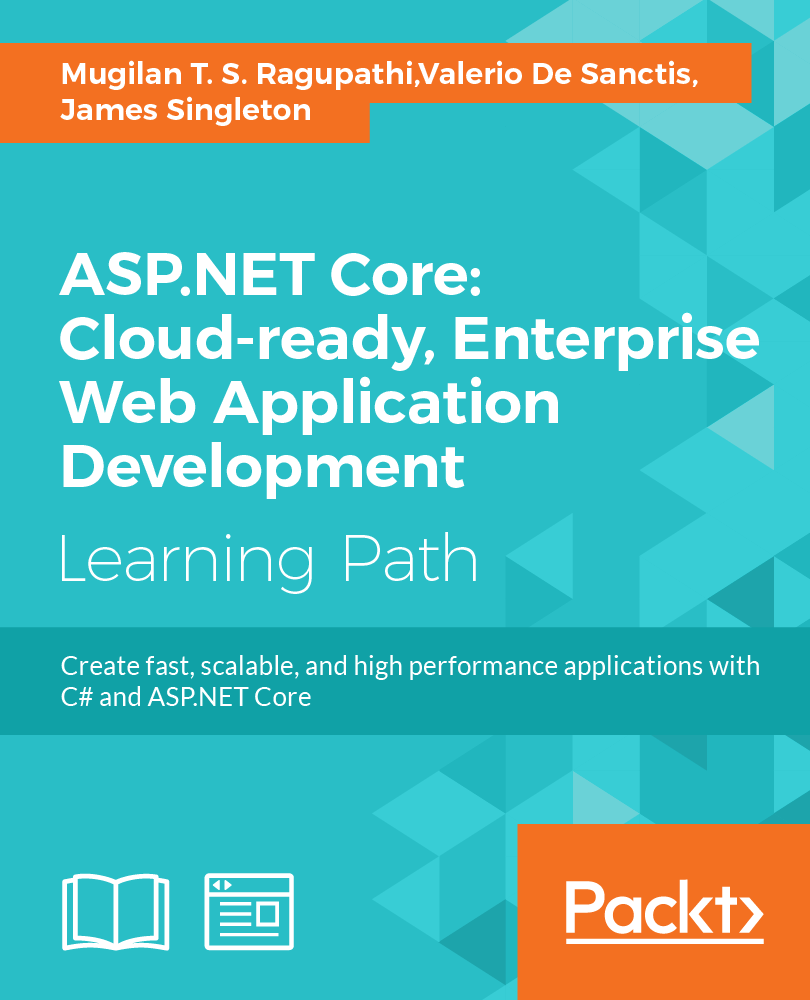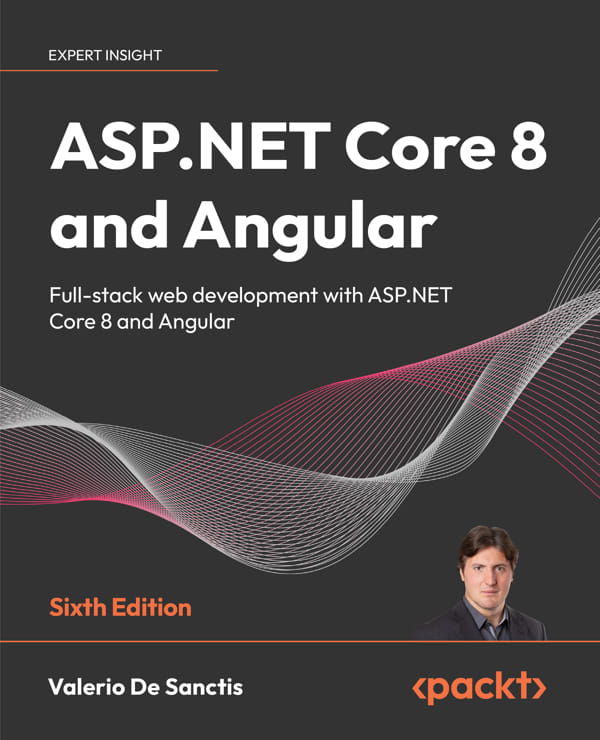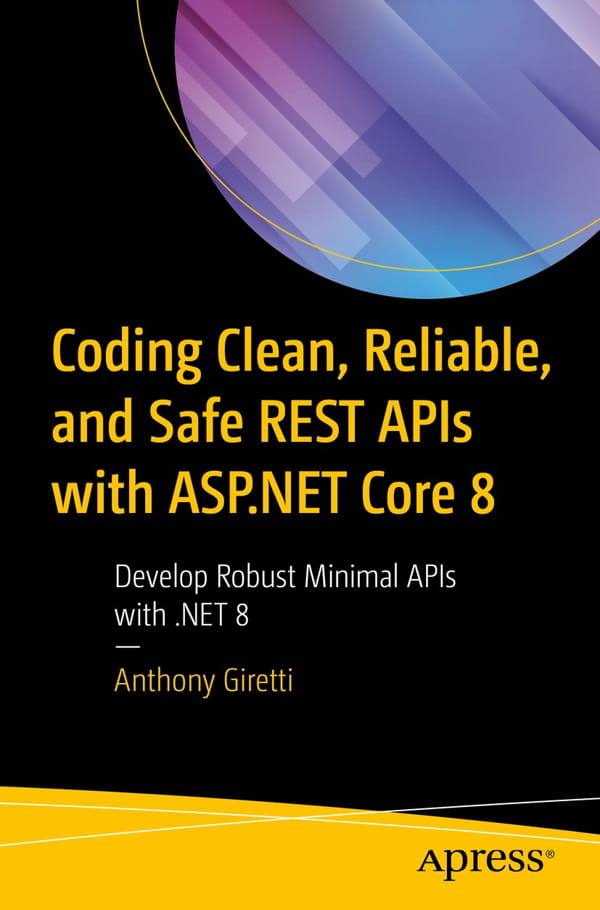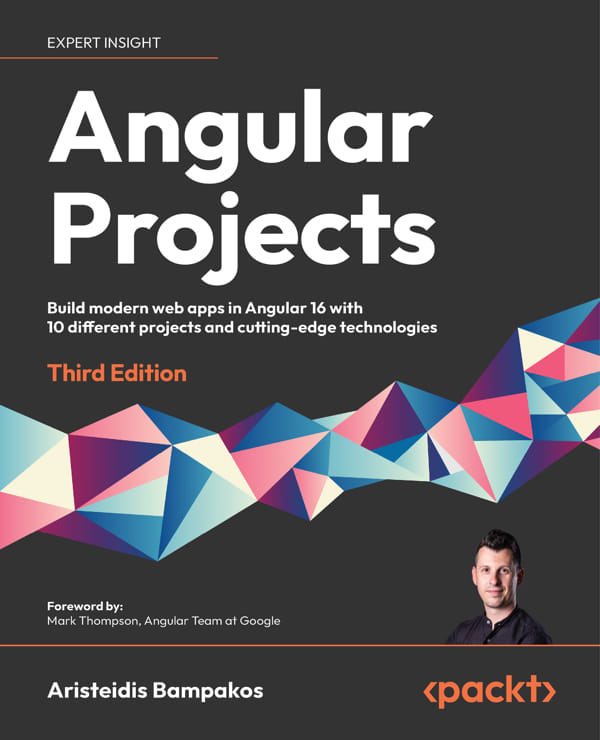ASP.NET Core: Cloud-ready, Enterprise Web Application Development

اگر وب سایت شما پویا هست و باید از اسکریپت نویسی سمت سرور استفاده کنید، میتوانید از ASP.NET استفاده کنید و حقیقت این هست که استفاده از AngularJS باعث نمیشود که کدهای سمت سرور شما MVCتر شود! اگر میخواهید که به کدهای سمت سرور خود ساختار MVC دهید میتوانید از ASP.NET MVC استفاده کنید. مسیر آموزشی این کتاب به گونه ای است که به شما کمک کند تا اصول ASP.NET Core MVC را یاد بگیرید و از دانش کسب شده در ساخت برنامههای ASP.NET Core استفاده کنید.
در این کتاب به شما نشان خواهیم داد که هنوز هم امکان دارد که برنامههای وب بزرگ را از پایه توسعه داد و این کار را با استفاده از ابزارهای مناسب و کمی حوصله انجام میدهیم تا چگونگی استفاده کردن از آنها با یکدیگر، تا رسیدن به چیزی که میخواهیم را یاد بگیرید.
در کتاب ASP.NET Core: Cloud-ready, Enterprise Web Application Development ما از دو فریمورک مطرح استفاده میکنیم. از ASP.NET Core برای پوشش مفاهیم سمت سرور و از Angular 2 برای مباحث سمت کلاینت نه فقط به خاطر قابلیتهای فوق العادشان و طراحی بی نقصشان، بلکه هر دوی آنها بازنویسی کاملی از نسخههای پیشین بسیار محبوبشان بودند که نقش رهبری در زمینهی خودشان را بر عهده داشتند.
در این کتاب من کاری میکنم تا اهمیت برنامههای تحت وب را درک کنید. ما نحوهی بهینه سازی کارایی را معرفی میکنیم و سعی کرده ایم تا تعادل را بین بهینه سازی زود گذر و کد ناکار آمد را از طریق رویکردی علمی و مبتنی بر شواهد، حفظ کنیم. این کتاب تکنیکهای بهینه سازی کارایی برنامههای تحت وب را حل میکند و از هر دو منظر مسائل عمومی( HTTP، HTTPS، HTTP/2، TCP/IP، database access، compression، I/O، asset optimization، caching، message queuing و ...) و C#، ASP.NET Core و NET Core.، بهبود کارایی بررسی شده است. این مطالب شامل بررسی جزئیات آخرین ویژگیهای فریمورکها است و نشان میدهد که چگونه الگوهای طراحی، کارایی را بهبود میبخشند. ما اشتباهات رایج کارایی که معمولا توسط توسعه دهنده مورد بی توجهی قرار گرفته است را نشان داده ایم و استراتژیهای تشخیص و رفع این مشکلات در مراحل اولیه را ارائه داده ایم. با پیشاپیش یاد گرفتن و رسیدگی به این چالش ها، شما میتوانید از سوپرایزهای کثیف که موقع منتشر کردن کد پیش میآیند دوری کنید.
Create fast, scalable, and high-performance applications with C# and ASP.NET Core
About This Book
Get first-principle coverage of the latest ASP.NET Core MVC
Find out how to bring together the capabilities and features of both Angular 2 and ASP.NET Core
Discover common areas you might encounter performance problems with and areas you don't need to worry about
Who This Book Is For
This book is for developers who want to learn to build web applications using ASP.NET Core, those who want to make a career building web applications using Microsoft technology, and those who are working on other web frameworks and want to learn ASP.NET Core.
What You Will Learn
Get to know the concepts of ASP.NET MVC
Create a Controller with action methods
Build a view using several features of the Razor View engine
Construct a Model for ASP.NET Core MVC application
Find out how the features of ASP.NET Core and Angular 2 perfectly complement each other
Handle requests and actions using server-side and client-side Routing
Create a Data Model using Entity Framework Core
Learn how to use Angular 2 components and master directives
Improve performance at the network level and I/O level, and how to optimize the application as a whole
Monitor performance as part of Continuous Integration and regression testing
In Detail
ASP.NET Core is the new, open source, and cross-platform, web-application framework from Microsoft. ASP.NET Core MVC helps you build robust web applications using the Model-View-Controller design. This guide will help you in building applications that can be deployed on non-Windows platforms such as Linux.
Starting with an overview of the MVC pattern, you will quickly dive into the aspects that you need to know to get started with ASP.NET. You will learn about the core architecture of model, view, and control. Integrating your application with Bootstrap, validating user input, interacting with databases, and deploying your application are some of the things that you will learn to execute with this fast-paced guide. You will test your knowledge as you build a fully working sample application using the skills you've learned throughout the book.
Moving forward, this guide will teach you to combine the impressive capabilities of ASP.NET Core and Angular 2. Not only will you learn how Angular 2 can complement your .NET skills and toolkit, you'll also learn everything you need to build a complete, dynamic single-page application. Find out how to get your data model in place and manage an API, before styling and designing your frontend for an exceptional user experience. You will find out how to optimize your application for SEO, identify and secure vulnerabilities, and how to successfully deploy and maintain your application. From here, you will delve into the latest frameworks and software design patterns to improve your application performance.
The course offers premium, highly practical content on the recently released ASP.NET Core, and includes material from the following Packt books: Learning ASP.NET Core MVC Programming, ASP.NET Core and Angular 2, and ASP.NET Core 1.0 High Performance.
Style and approach
This learning path takes a first-principles approach to help you understand and implement ASP.NET MVC solutions.
Table of Contents
1. Module 1
1. Introduction to ASP.NET Core
2. Setting Up the Environment
3. Controllers
4. Views
5. Models
6. Validation
7. Routing
8. Beautifying ASP.NET MVC Applications with Bootstrap
9. Deployment of ASP.NET Core Application
10. Building HTTP-based Web Services Using ASP.NET Web API
11. Improving Performance of an ASP.NET Core Application
12. ASP.NET Core Identity
2. Module 2
1. Getting Ready
2. ASP.NET Controllers and Server-Side Routes
3. Angular 2 Components and Client-Side Routing
4. The Data Model
5. Persisting Changes
6. Applying Styles
7. Authentication and Authorization
8. Third-Party Authentication and External Providers
9. User Registration and Account Edit
10. Finalization and Deployment
3. Module 3
1. Why Performance Is a Feature
2. Measuring Performance Bottlenecks
3. Fixing Common Performance Problems
4. Addressing Network Performance
5. Optimizing I/O Performance
6. Understanding Code Execution and Asynchronous Operations
7. Learning Caching and Message Queuing
8. The Downsides of Performance-Enhancing Tools
9. Monitoring Performance Regressions
10. The Way Ahead
 می پسندم
می پسندم
 به درد نمی خوره
به درد نمی خوره
















